-
 Bitcoin
Bitcoin $108,489.6704
1.13% -
 Ethereum
Ethereum $2,502.0528
2.92% -
 Tether USDt
Tether USDt $1.0002
0.00% -
 XRP
XRP $2.1941
0.51% -
 BNB
BNB $655.3375
1.00% -
 Solana
Solana $151.5977
1.27% -
 USDC
USDC $0.9999
0.00% -
 TRON
TRON $0.2768
0.32% -
 Dogecoin
Dogecoin $0.1676
2.86% -
 Cardano
Cardano $0.5675
0.98% -
 Hyperliquid
Hyperliquid $40.6109
7.48% -
 Bitcoin Cash
Bitcoin Cash $500.7746
2.09% -
 Sui
Sui $2.8328
2.03% -
 Chainlink
Chainlink $13.4452
1.26% -
 UNUS SED LEO
UNUS SED LEO $9.1623
0.39% -
 Avalanche
Avalanche $18.2267
2.24% -
 Stellar
Stellar $0.2382
0.00% -
 Toncoin
Toncoin $2.8885
1.68% -
 Shiba Inu
Shiba Inu $0.0...01159
0.91% -
 Litecoin
Litecoin $87.1827
0.88% -
 Hedera
Hedera $0.1511
2.90% -
 Monero
Monero $315.4992
-0.59% -
 Polkadot
Polkadot $3.4663
2.34% -
 Bitget Token
Bitget Token $4.6118
-0.65% -
 Dai
Dai $1.0000
-0.01% -
 Ethena USDe
Ethena USDe $1.0003
0.02% -
 Uniswap
Uniswap $7.2989
4.69% -
 Pepe
Pepe $0.0...01003
5.73% -
 Aave
Aave $275.5616
7.15% -
 Pi
Pi $0.5181
-2.49%
Does Bybit leverage support full-position mode? What is the difference with position-by-position mode?
Bybit offers full-position mode, where leverage affects the entire account, and position-by-position mode, where each trade's leverage is managed independently.
May 07, 2025 at 11:22 pm
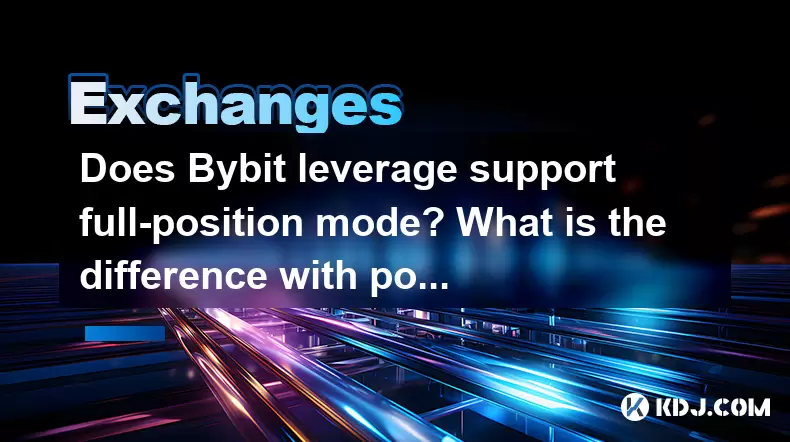
Bybit, one of the leading cryptocurrency exchanges, offers various trading modes to cater to the diverse needs of its users. Among these modes, leverage plays a crucial role in determining how traders can manage their positions. Two popular leverage modes on Bybit are full-position mode and position-by-position mode. Understanding the differences between these modes is essential for traders to optimize their trading strategies effectively.
What is Full-Position Mode?
Full-position mode on Bybit allows traders to manage their entire account balance as a single unit. This means that the leverage applied to one position affects the entire account's margin. In this mode, the margin is calculated based on the total exposure of all open positions.
For example, if a trader has multiple positions open and decides to increase the leverage on one of them, the change will impact the overall margin requirement for the entire account. This mode is particularly useful for traders who prefer a holistic approach to managing their portfolio and want to leverage their entire account balance strategically.
How to Enable Full-Position Mode on Bybit
To enable full-position mode on Bybit, follow these steps:
- Log in to your Bybit account.
- Navigate to the Trading section.
- Click on the Settings icon, usually located at the top right corner of the trading interface.
- Under the Trading Mode section, select Full-Position Mode.
- Confirm your selection and start trading with the new mode.
What is Position-by-Position Mode?
In contrast, position-by-position mode allows traders to manage each position independently. This means that the leverage and margin requirements are calculated separately for each open position. Traders can adjust the leverage for each position without affecting the others, providing more granular control over their trading activities.
This mode is beneficial for traders who want to manage risk on a per-position basis and tailor their leverage according to the specific characteristics of each trade. It allows for more flexibility and can help in diversifying risk across different positions.
How to Enable Position-by-Position Mode on Bybit
To switch to position-by-position mode on Bybit, follow these steps:
- Log in to your Bybit account.
- Go to the Trading section.
- Click on the Settings icon in the trading interface.
- Under the Trading Mode section, choose Position-by-Position Mode.
- Confirm your selection and proceed with your trading activities.
Key Differences Between Full-Position and Position-by-Position Mode
The primary difference between full-position mode and position-by-position mode lies in how leverage and margin are managed. In full-position mode, the entire account's margin is affected by changes in leverage on any single position. This can lead to a more interconnected risk management strategy where the performance of one position can impact the overall account balance.
On the other hand, position-by-position mode isolates each position's margin and leverage, allowing traders to manage risk more precisely. This mode is ideal for traders who want to experiment with different leverage levels for different trades without affecting their overall account balance.
Practical Implications of Using Full-Position Mode
When using full-position mode, traders need to be aware of the potential for a domino effect. If one position experiences significant losses, it could lead to a margin call that affects the entire account. This mode requires a more cautious approach to leverage management, as the interconnected nature of the positions can amplify both gains and losses.
Traders who prefer full-position mode often have a clear strategy for managing their overall portfolio risk. They might use this mode to take advantage of market trends that they believe will affect their entire portfolio positively. However, they must also be prepared to adjust their positions quickly if market conditions change unexpectedly.
Practical Implications of Using Position-by-Position Mode
Position-by-position mode offers more flexibility and control over individual trades. Traders can experiment with different leverage levels for each position, allowing them to tailor their strategies to the specific characteristics of each trade. This mode is particularly useful for traders who engage in multiple trading strategies simultaneously.
For example, a trader might use high leverage on a position they believe has a high probability of success, while using lower leverage on a more speculative trade. This approach allows for better risk management and can help in diversifying the overall risk across different positions.
Choosing the Right Mode for Your Trading Strategy
The choice between full-position mode and position-by-position mode depends on a trader's risk tolerance, trading strategy, and overall market outlook. Traders who prefer a more holistic approach to managing their portfolio might find full-position mode more suitable. Conversely, those who want to manage risk on a per-position basis and experiment with different leverage levels might prefer position-by-position mode.
It's important for traders to understand the implications of each mode and how it aligns with their trading goals. Experimenting with both modes in a demo account can help traders determine which one works best for their specific needs.
Frequently Asked Questions
Q: Can I switch between full-position mode and position-by-position mode during an open trade?
A: Yes, you can switch between these modes at any time. However, be aware that changing modes during an open trade can affect your margin requirements and potentially trigger a margin call. It's advisable to close all positions before switching modes to avoid unintended consequences.
Q: Does Bybit charge different fees for full-position mode and position-by-position mode?
A: Bybit does not charge different fees based on the trading mode. The fees are determined by the type of trade (e.g., spot, futures) and the user's trading volume. However, the choice of mode can affect your overall trading costs due to differences in margin requirements and potential liquidation risks.
Q: How does the choice of trading mode affect my risk management strategy?
A: The choice of trading mode significantly impacts your risk management strategy. In full-position mode, you need to manage the risk of your entire portfolio as a single unit, which can lead to higher exposure to market volatility. In position-by-position mode, you can manage risk on a per-position basis, allowing for more precise control over your exposure to different trades.
Q: Can I use both full-position mode and position-by-position mode simultaneously on Bybit?
A: No, you cannot use both modes simultaneously on Bybit. You must choose one mode for your entire account. However, you can switch between modes as needed, provided you understand the implications of such a change on your open positions and margin requirements.
Disclaimer:info@kdj.com
The information provided is not trading advice. kdj.com does not assume any responsibility for any investments made based on the information provided in this article. Cryptocurrencies are highly volatile and it is highly recommended that you invest with caution after thorough research!
If you believe that the content used on this website infringes your copyright, please contact us immediately (info@kdj.com) and we will delete it promptly.
- Ripple, Stablecoin, Adoption: RLUSD Leading the Charge
- 2025-06-30 14:30:12
- Bitcoin ETF, IBIT, and the Bull Flag: Is $144,000 on the Horizon?
- 2025-06-30 14:50:12
- Bitcoin, Passive Income, and a Bull Raise: Riding the Crypto Wave
- 2025-06-30 14:30:12
- Bitcoin, Personal Loans, and Omega 88: A New Era in Lending?
- 2025-06-30 15:09:14
- Saylor's Strategy: How MicroStrategy's Bitcoin Bet is Reshaping Finance
- 2025-06-30 14:52:14
- Metaplanet's Bitcoin Blitz: From Zero to Hero in the Corporate Treasury Race
- 2025-06-30 15:10:54
Related knowledge
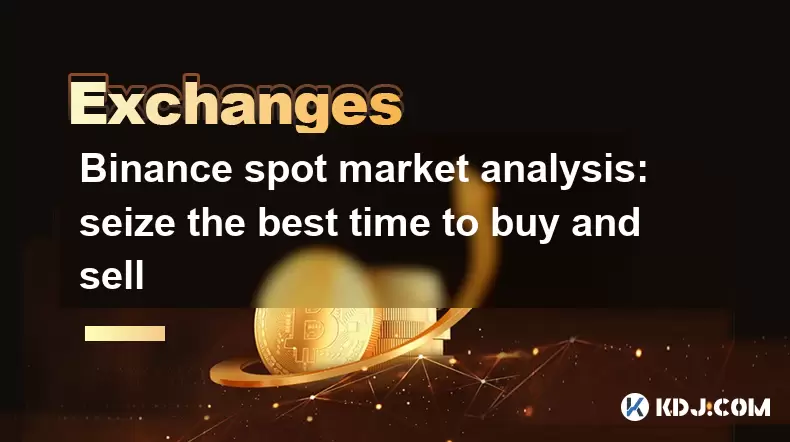
Binance spot market analysis: seize the best time to buy and sell
Jun 19,2025 at 04:56pm
Understanding the Binance Spot MarketThe Binance spot market is one of the most popular platforms for cryptocurrency trading globally. It allows users to trade digital assets at current market prices, making it essential for traders aiming to buy low and sell high. Unlike futures or margin trading, spot trading involves direct ownership of the asset aft...
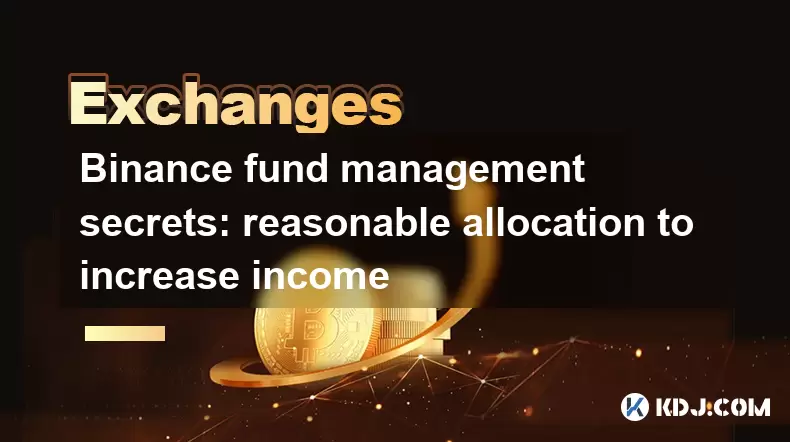
Binance fund management secrets: reasonable allocation to increase income
Jun 22,2025 at 02:29pm
Understanding Binance Fund ManagementBinance fund management involves strategic allocation of your cryptocurrency assets to optimize returns while managing risk. The key to successful fund management lies in understanding how different investment options on the Binance platform can be utilized to create a diversified portfolio. This includes spot tradin...
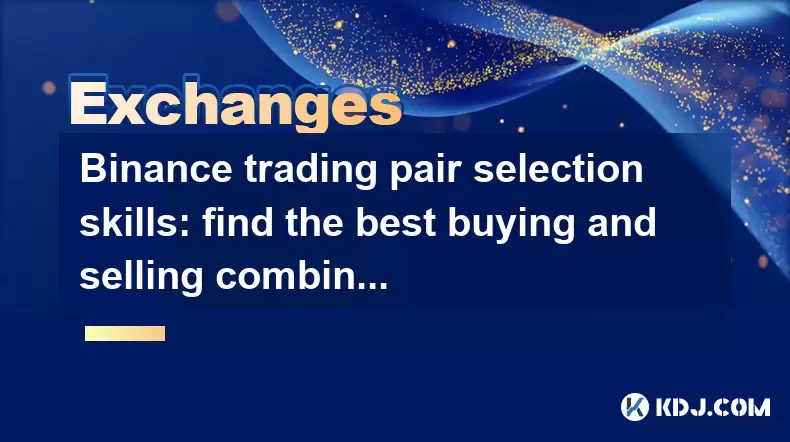
Binance trading pair selection skills: find the best buying and selling combination
Jun 23,2025 at 02:49am
Understanding the Basics of Trading Pairs on BinanceBefore diving into trading pair selection skills, it's essential to understand what a trading pair is. On Binance, a trading pair refers to two cryptocurrencies that can be traded against each other. For example, BTC/USDT means Bitcoin is being traded against Tether. Each trading pair has its own liqui...
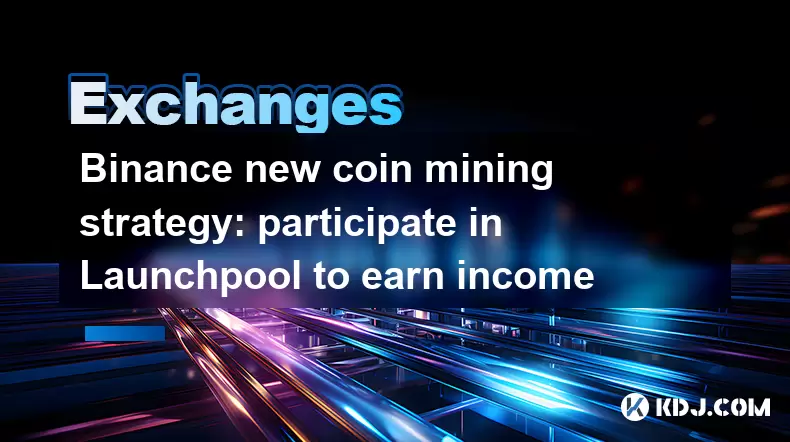
Binance new coin mining strategy: participate in Launchpool to earn income
Jun 23,2025 at 11:56am
What is Binance Launchpool and how does it work?Binance Launchpool is a feature introduced by the world’s largest cryptocurrency exchange, Binance, to allow users to earn new tokens through staking. This platform enables users to stake their existing cryptocurrencies (such as BNB, BUSD, or other supported assets) in exchange for newly launched tokens. T...
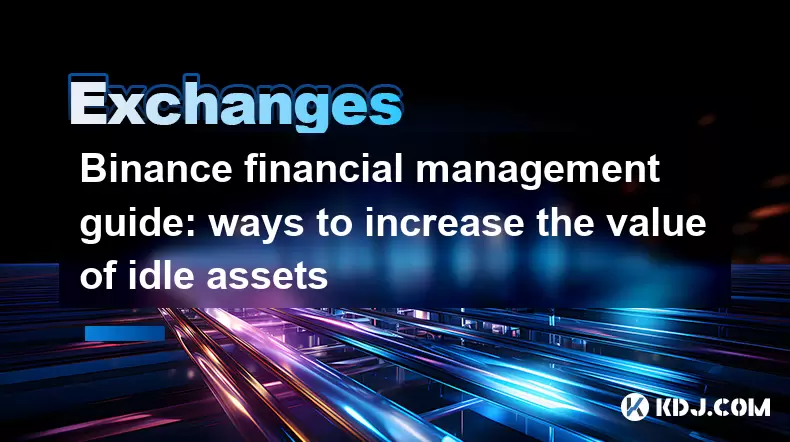
Binance financial management guide: ways to increase the value of idle assets
Jun 19,2025 at 11:22pm
Understanding Idle Assets in the Cryptocurrency SpaceIn the fast-paced world of cryptocurrency, idle assets refer to digital currencies that are not actively being used for trading, staking, or yield farming. Holding these funds in a wallet without utilizing them means missing out on potential growth opportunities. Binance, as one of the leading platfor...
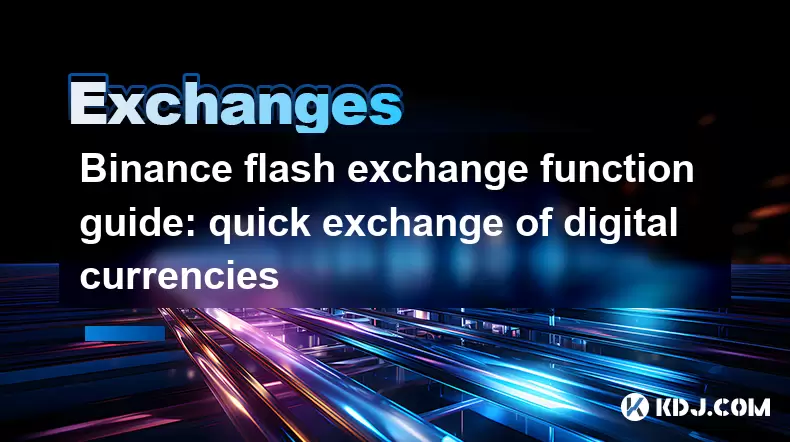
Binance flash exchange function guide: quick exchange of digital currencies
Jun 23,2025 at 12:29pm
What is the Binance Flash Exchange Function?The Binance Flash Exchange function is a powerful tool designed to allow users to instantly swap between supported cryptocurrencies without the need for placing traditional buy/sell orders. This feature simplifies the trading process by offering a direct exchange mechanism, eliminating the requirement to conve...

Binance spot market analysis: seize the best time to buy and sell
Jun 19,2025 at 04:56pm
Understanding the Binance Spot MarketThe Binance spot market is one of the most popular platforms for cryptocurrency trading globally. It allows users to trade digital assets at current market prices, making it essential for traders aiming to buy low and sell high. Unlike futures or margin trading, spot trading involves direct ownership of the asset aft...

Binance fund management secrets: reasonable allocation to increase income
Jun 22,2025 at 02:29pm
Understanding Binance Fund ManagementBinance fund management involves strategic allocation of your cryptocurrency assets to optimize returns while managing risk. The key to successful fund management lies in understanding how different investment options on the Binance platform can be utilized to create a diversified portfolio. This includes spot tradin...

Binance trading pair selection skills: find the best buying and selling combination
Jun 23,2025 at 02:49am
Understanding the Basics of Trading Pairs on BinanceBefore diving into trading pair selection skills, it's essential to understand what a trading pair is. On Binance, a trading pair refers to two cryptocurrencies that can be traded against each other. For example, BTC/USDT means Bitcoin is being traded against Tether. Each trading pair has its own liqui...

Binance new coin mining strategy: participate in Launchpool to earn income
Jun 23,2025 at 11:56am
What is Binance Launchpool and how does it work?Binance Launchpool is a feature introduced by the world’s largest cryptocurrency exchange, Binance, to allow users to earn new tokens through staking. This platform enables users to stake their existing cryptocurrencies (such as BNB, BUSD, or other supported assets) in exchange for newly launched tokens. T...

Binance financial management guide: ways to increase the value of idle assets
Jun 19,2025 at 11:22pm
Understanding Idle Assets in the Cryptocurrency SpaceIn the fast-paced world of cryptocurrency, idle assets refer to digital currencies that are not actively being used for trading, staking, or yield farming. Holding these funds in a wallet without utilizing them means missing out on potential growth opportunities. Binance, as one of the leading platfor...

Binance flash exchange function guide: quick exchange of digital currencies
Jun 23,2025 at 12:29pm
What is the Binance Flash Exchange Function?The Binance Flash Exchange function is a powerful tool designed to allow users to instantly swap between supported cryptocurrencies without the need for placing traditional buy/sell orders. This feature simplifies the trading process by offering a direct exchange mechanism, eliminating the requirement to conve...
See all articles

























































































